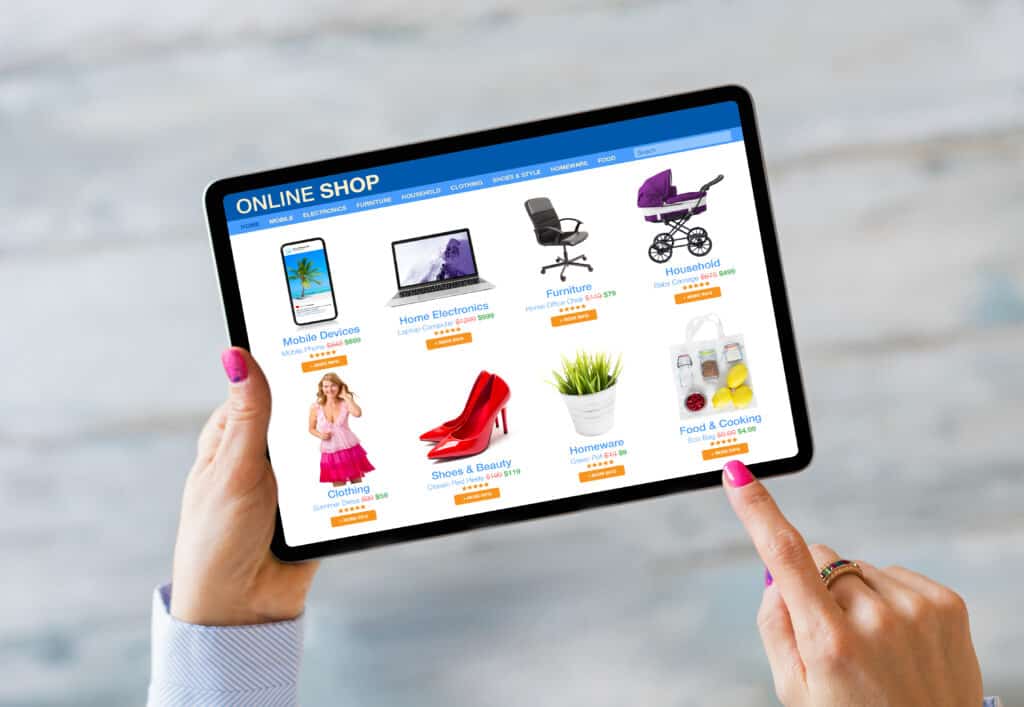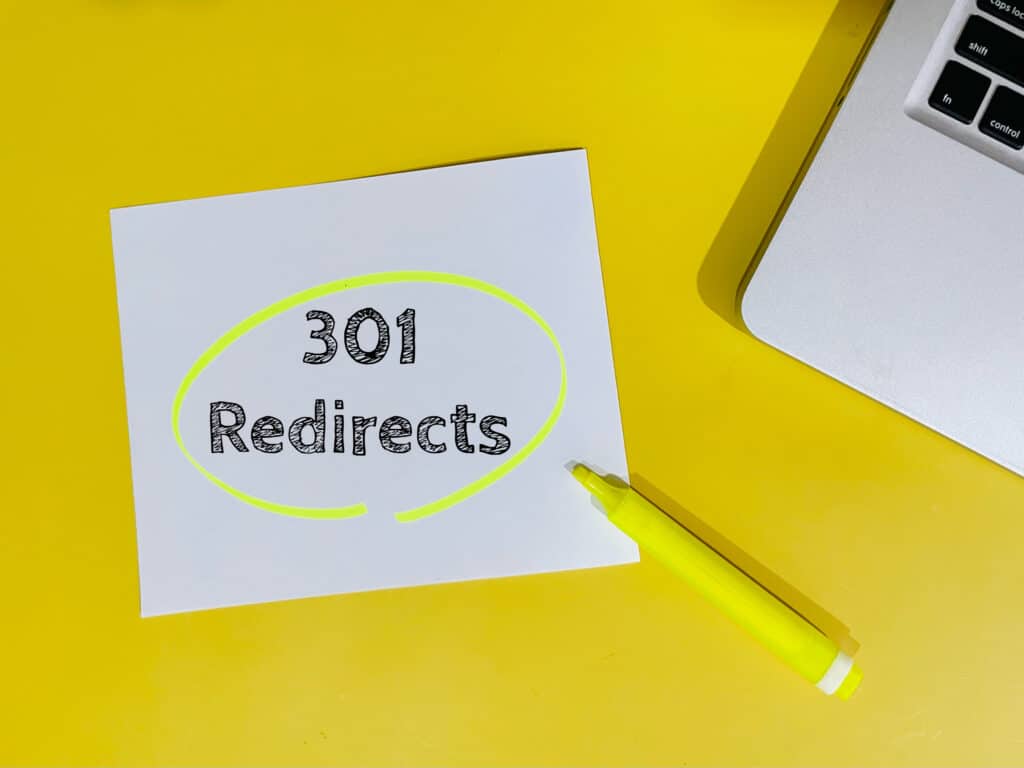
14 Shopify SEO Tips To Help Your Search Engine Rankings

The U.S. has millions of e-commerce companies, with online purchasing representing over 13% of total retail sales. Experts expect these numbers to grow. Many of these online businesses choose to use customizable website-building platforms such as Shopify, rather than hosting their own sites.
Creating an online store is only the first step; the next is attracting customers. With so much competition, business owners need to find ways to bring their stores to the top of search engine rankings. Utilizing search engine optimization strategies can boost your business’s organic marketing results. These Shopify SEO tips are great ways to get started.
How Can These Shopify SEO Tips Help Your Business?

Businesses won’t succeed without customers, and companies use many strategies to bring in new clients. Although you may include paid advertising in your marketing strategy, organic marketing is a vital part of drawing in and keeping customers. Better yet, it’s free.
Organic marketing uses simple yet effective strategies to generate traffic to your website. These strategies can include crafting social media posts, videos, and well-written blogs, and using SEO keywords throughout your content.
When users enter a query into search engines like Google and Bing, those platforms use various criteria and algorithms to generate search results. Some of the most important factors search engines rely on include:
- Keyword usage
- High-quality content
- Backlinks
- Content relevancy
- Site structure
The pages predicted to have the most relevance to users appear at the top, and people typically click on the top-ranking results. SEO marketing tools can improve the performance and rank of your online store and product pages.
E-commerce businesses depend on favorable search results to gain new clients and increase brand awareness. For companies using Shopify to host their online stores, these Shopify SEO tips can help you achieve those goals.
14 Shopify Tips To Improve Your Store’s Ranking

E-commerce store owners are typically online shoppers, too. When you’re considering these tips, think about what you look for yourself when you’re shopping. Ask yourself questions like:
- What search terms do you use?
- What draws your attention?
- What prompts you to leave one site in favor of another?
- What makes you decide to make purchases from particular stores?
Use your answers in combination with these tips to increase your online success.
1. Optimize Your Shopify Site
Websites should be user-friendly. What does that mean, exactly? Your site’s layout should be easy for users to understand and navigate, making it simple for potential customers to find the products or information they seek. Purchasing your products should be a simple process as well.
Your homepage should have links to categories, and those category pages can link to sub-categories or product pages. This structure creates a map to guide users and search engines to relevant pages.
Search engines look for specific types of content and pages on any website. Include “Contact Us” and “About Us” pages on your site. Not only do these pages assist customers, but they also lend credibility to your company.
2. Research Keywords

A list of Shopify SEO tips isn’t complete without explaining the importance of using SEO keywords. Simply put, keywords are single words or short phrases that people enter into search engines to find specific information or products.
Wisely using these keywords in your category and product descriptions, metadata, blog posts, and other marketing areas draws the notice of search engine crawling and brings more relevance to your content. You can find online lists of targeted keywords appropriate to various subjects and industries.
3. Use Title Tags, Meta Descriptions, and Images
Search engines use the information found in your title tags and meta descriptions to determine what is on specific pages. Use an SEO keyword in each for best results. Title tags should consist of 60 characters, including spaces. Meta descriptions are 160 characters and provide a brief description of what readers will find on that page.
Alt tags verbally describe website images. Using targeted keywords in alt tags explains the images to the visually impaired and search engine crawlers.
4. Post Blogs Regularly
Blogging often intimidates e-commerce site owners, but regular blog posts can significantly boost your store’s traffic. Your blogs should be interesting, relevant, and informative. They can showcase particular products or services and promote your brand awareness.
If you need help implementing this Shopify SEO tip, you can work with companies like BKA Content. BKA’s writers produce well-written blogs using SEO best practices for clients in multiple industries.
Want More Shopify Customers?
Our monthly blog writing services deliver high-quality SEO content that attracts customers to your Shopify website. Learn more today!
5. Improve Your Customer Experience
Estimates vary, but you typically have only eight seconds to capture a visitor’s attention on your website. Not only should your site be attractive and user-friendly, but it should also load quickly.
Many consumers search for products and complete purchases on their phones or other mobile devices, so ensuring that your site is optimized for mobile viewers is an absolute necessity.
6. Create Captivating Pages
Dynamic product pages typically prompt customers to stay on those pages longer, boosting your search engine ranking and sales. Consider incorporating:
- 360-degree product photos
- Videos
- Animated photos
Another Shopify SEO tip is including customer reviews to assure buyers that your products and services are high quality.
7. Offer 100% Unique Content
Plagiarism is typically not illegal, but it isn’t an accepted practice. Search engines can find phrases or blocks of duplicated content within your own site and when comparing your site to others. Your search engine results can suffer if your site repeats content from an external source.
You can use tools like the Copyscape Plagiarism Checker and Grammarly to detect duplicate content, then edit your copy accordingly.
8. Build Backlinks
Backlinks connect your site to other domains through links. Quality links, especially from authoritative sources, give your site credibility. When you use a link on a webpage, you’re vouching for the connected page’s authenticity, and vice-versa.
Search engines weigh backlinks heavily when ranking a page’s content. Shopify SEO tips for building a more successful store include establishing backlinks.
9. Use Canonicalization

Many e-commerce stores carry multiple versions of the same product, each with its own page. For instance, you might offer several colors of the same bracelet. Canonicalization tells search engines which of the pages is the primary and to ignore the other pages, since duplication lowers search engine rankings.
You must also set domain-level canonicalization because various URLs can all lead to the same site. Use the Shopify admin tools to adjust page and domain canonicalization settings.
10. Submit Your Sitemap to the Google Search Console
Google Search Console is a tool that lets website owners optimize and monitor their search engine performance. Your Shopify store has an automatically generated sitemap that includes links to every page of your site. Submit this sitemap to Google Search Console or other search engine web admin tools for optimum SEO performance.
11. Integrate Google Analytics
Google Analytics is a free integration that helps website owners analyze how visitors interact with their sites. This tool has many features, including showing how much of your traffic results from organic marketing. Following this Shopify SEO tip also pinpoints how specific marketing strategies and content resonate with your viewers, giving you a chance to make data-driven improvements.
Shopify makes integrating Google Analytics into your online store easy through the admin page. Always use the most current Google Analytics version as your ID code.
12. Enable 301 Redirects

E-commerce stores often have out-of-stock products or move items between pages. Rather than showing your customers the dreaded “404 Page Not Found” message, you can use a 301 redirect instead.
Your out-of-stock product might have been popular and had links from other sites. A 301 redirect automatically sends users to an alternate page on your site, reducing the potential for customer dissatisfaction. The Shopify admin portal makes this an easy process. Enabling 301 redirects is an often-overlooked Shopify SEO tip that can potentially increase your site’s ranking.
13. Use Shopify Tools and SEO Apps
There are multiple apps and tools you can integrate into your Shopify store’s framework to increase your success. The right app can facilitate the following:
- Product reviews
- Email marketing
- Translation
- Customer information forms
- Inventory management
- Point of sale
Shopify wants its e-commerce stores to be successful, so it provides many resources and tools to store owners.
14. Publish a Newsletter
Shopify enables shop owners to use email newsletter marketing to grow their businesses. You can publish newsletters to increase brand awareness, educate your audience, generate customer feedback, and promote new items or sales events.
Include a newsletter sign-up block on your website, social media posts, and blogs. Then you can set a send schedule to keep your audience engaged with your e-commerce store. Be sure to include links to your Shopify store or product pages in your marketing materials to increase the likelihood of readers visiting your site.
Do You Need Help Implementing These Shopify SEO Tips?
Whether you need help writing blogs or optimizing your landing page, category pages, item descriptions, and other e-commerce marketing tools, BKA Content can assist you. We have a proven track record of helping businesses succeed, and we can work with you to help implement these Shopify SEO tips. Contact BKA Content today by calling (801) 432-2956 or using this form to get in touch.
- How To Fix Broken Internal Links - December 12, 2024
- 10 Internal Linking Tools To Help With SEO - December 10, 2024
- Are Redirects Bad for SEO? - December 5, 2024

